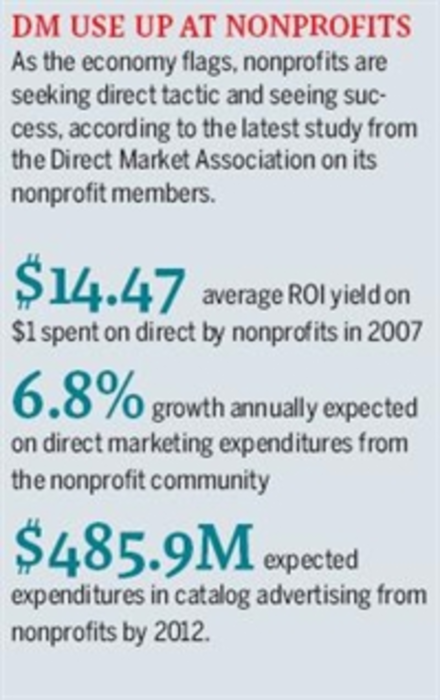This could be shaping up to be a difficult year for some nonprofit organizations’ fundraising efforts because of a combination of factors, including the tough economy, the foreclosure crisis and the upcoming Presidential election.
“There is a lot of uncertainty about the overall giving environment, more so than in past years,” says Greg Fox, SVP and chief strategy officer at database marketing agency Merkle.
Recently, there have been rumblings that the American Red Cross is preparing to cut one-third of its headquarters staff and pare regional management. The nonprofit cited a competitive fundraising environment, overblown budgets and organizational issues as the reasons for these moves. Giving is already down in some areas of the Midwest and the South, according to Merkle’s data.
“There may be a correlation between [the reduced giving and] the heightened foreclosure rates in those markets,” Fox says.
The overall economic situation may also be making an impact on people’s willingness to give. While the country is not officially in a recession, the presence of traditional indicators like accelerating inflation and unemployment rates are a red flag.
“We know from research that giving historically goes down by 1%-5% in recessionary years,” says Patrick Rooney, director of research at the Center on Philanthropy at Indiana University.
The presidential election is a wild card in how this year may play out for nonprofits. The political candidates “out -mail anybody else asking for charitable dollars,” Fox says. Since there is a finite amount of charitable dollars available, there are some nonprofits that feel they struggle during election times and even reduce the size of their mail drops a month prior to the elections, when the political fundraising activity is at its height.
However, the Center on Philanthropy’s research shows no impact of presidential election cycles on private giving. “While there is lots of money being raised by politicians, it’s a drop in the bucket compared to what charities raise,” Rooney says.
Not all nonprofits are feeling the crunch, however. “We actually had a great December,” says Duane Peters, VP for advocacy and communication at the Lupus Foundation of America. He adds the organization raised considerably more in December 2007 than it did during the same period in the previous year, in part because of a growing use of e-mail solicitations.
The foundation installed an online platform from Convio in August and has since been building its e-mail list and developed several e-mail newsletters.
“We will continue to increase our use of the Internet in 2008 to regularly communicate with donors and constituents,” Peters says.
These efforts, he continues, are not coming at the expense of the organization’s direct mail campaigns — which is exactly the approach that the Center on Philanthropy would recommend.
Rooney states that this is not the right time to cut back on mailing strategies, even if response rates are declining. “If you reduce your mailing during a recession because you’re not going to raise as much, it’s a self-fulfilling prophecy because you will see a decrease in your fundraising levels,” he says.
Nonprofits should, instead, look at recessionary years as a time to cultivate donors for the future, according to Senny Boone, VP and executive director at the Nonprofit Federation. “In times of need, that’s when nonprofits can step up and really showcase their value and efforts,” she says, adding that targeted fundraising efforts should continue to perform well.






